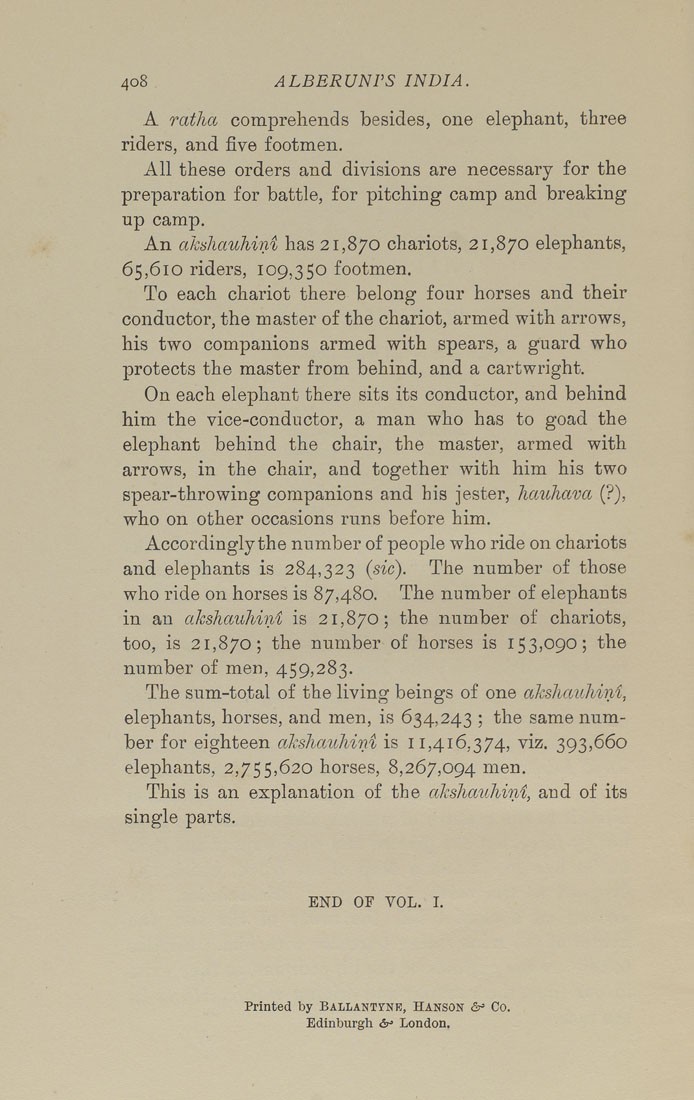4o8 ALBERUNPS INDIA.
A ratha comprehends besides, one elephant, three
riders, and five footmen.
All these orders and divisions are necessary for the
preparation for battle, for pitching camp and breaking
up camp.
An akshauhini has 21,870 chariots, 21,870 elephants,
65,610 riders, 109,350 footmen.
To each chariot there belong four horses and their
conductor, the master of the chariot, armed with arrows,
his two companions armed with spears, a guard who
protects the master from behind, and a cartwright.
On each elephant there sits its conductor, and behind
him the vice-conductor, a man who has to goad the
elephant behind the chair, the master, armed with
arrows, in the chair, and together with him his two
spear-throwing companions and his jester, hauhava (?),
who on other occasions runs before him.
Accordingly the number of people who ride on chariots
and elephants is 284,323 (sic). The number of those
who ride on horses is 87,480. The number of elephants
in an akshauhini is 21,870; the number of chariots,
too, is 21,870; the number of horses is 153,090; the
number of men, 459,283.
The sum-total of the living beings of one akshauhini,
elephants, horses, and men, is 634,243 ; the same num¬
ber for eighteen ctkshauhini is 11,4.16,2)7^, viz, 393,660
elephants, 2,755,620 horses, 8,267,094 men.
This is an explanation of the ctJcshauhini, and of its
single parts.
END OF VOL. L
Printed by Ballantvne, Hanson &' Co.
Edinburgh ir' London.
|








